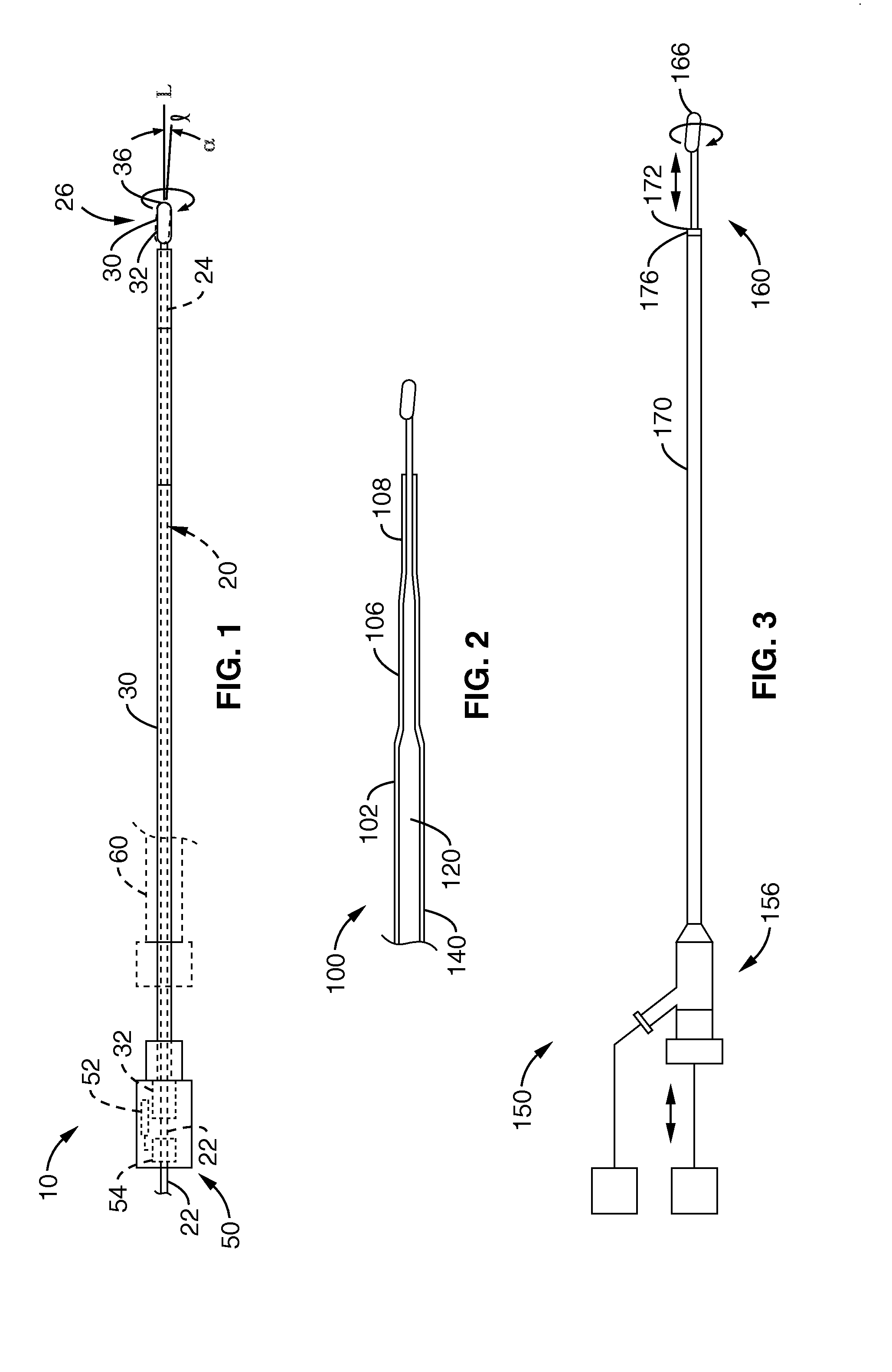Total vascular occlusion treatment system and method
a technology of vascular occlusion and treatment system, applied in the field of medical devices, can solve the problems of increasing morbidity, increasing the risk of ctosis, and progressing for a long time, and achieve the effect of inhibiting the resistance of ctosis
- Summary
- Abstract
- Description
- Claims
- Application Information
AI Technical Summary
Benefits of technology
Problems solved by technology
Method used
Image
Examples
Embodiment Construction
[0082] As shown in FIG. 1, the invention includes a chronic total occlusion (CTO) crossing system 10 with a wire 20 located coaxially within an outer tubular sheath 40. The wire includes a distal tip 26 extending beyond the distal end 36 of the tubular sheath. The proximal end portions 22, 32 of each of the wire 20 and tubular sheath 30, respectively, are coupled to an actuator assembly 50 in such a manner that the wire 20 is mechanically spun by a motor 52 coupled to the wire via a coupler 54 and so that the wire 20 spins within the outer tubular sheath 40.
[0083] The wire's distal tip 26 includes an enlargement 30 that, in the illustrative embodiment shown in FIG. 1, is constructed and oriented in a specific and particularly beneficial manner as follows. The enlargement 30 has a length along a longitudinal axis I that extends between a proximal end 32 and a distal end 36. The enlargement 30 is canted relative to a core 24 of wire 20 to which the enlargement 30 is secured such that...
PUM
 Login to View More
Login to View More Abstract
Description
Claims
Application Information
 Login to View More
Login to View More - R&D
- Intellectual Property
- Life Sciences
- Materials
- Tech Scout
- Unparalleled Data Quality
- Higher Quality Content
- 60% Fewer Hallucinations
Browse by: Latest US Patents, China's latest patents, Technical Efficacy Thesaurus, Application Domain, Technology Topic, Popular Technical Reports.
© 2025 PatSnap. All rights reserved.Legal|Privacy policy|Modern Slavery Act Transparency Statement|Sitemap|About US| Contact US: help@patsnap.com



